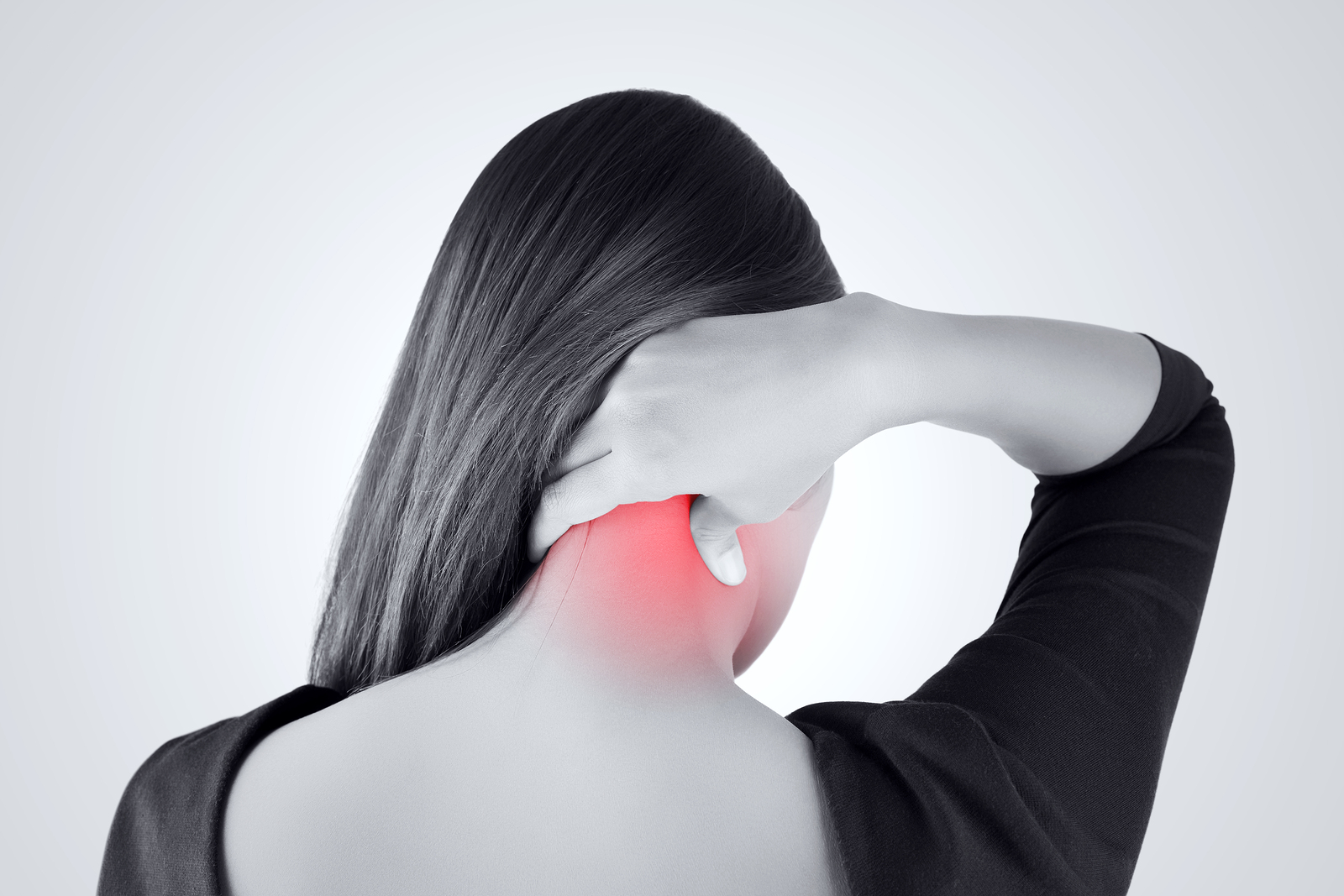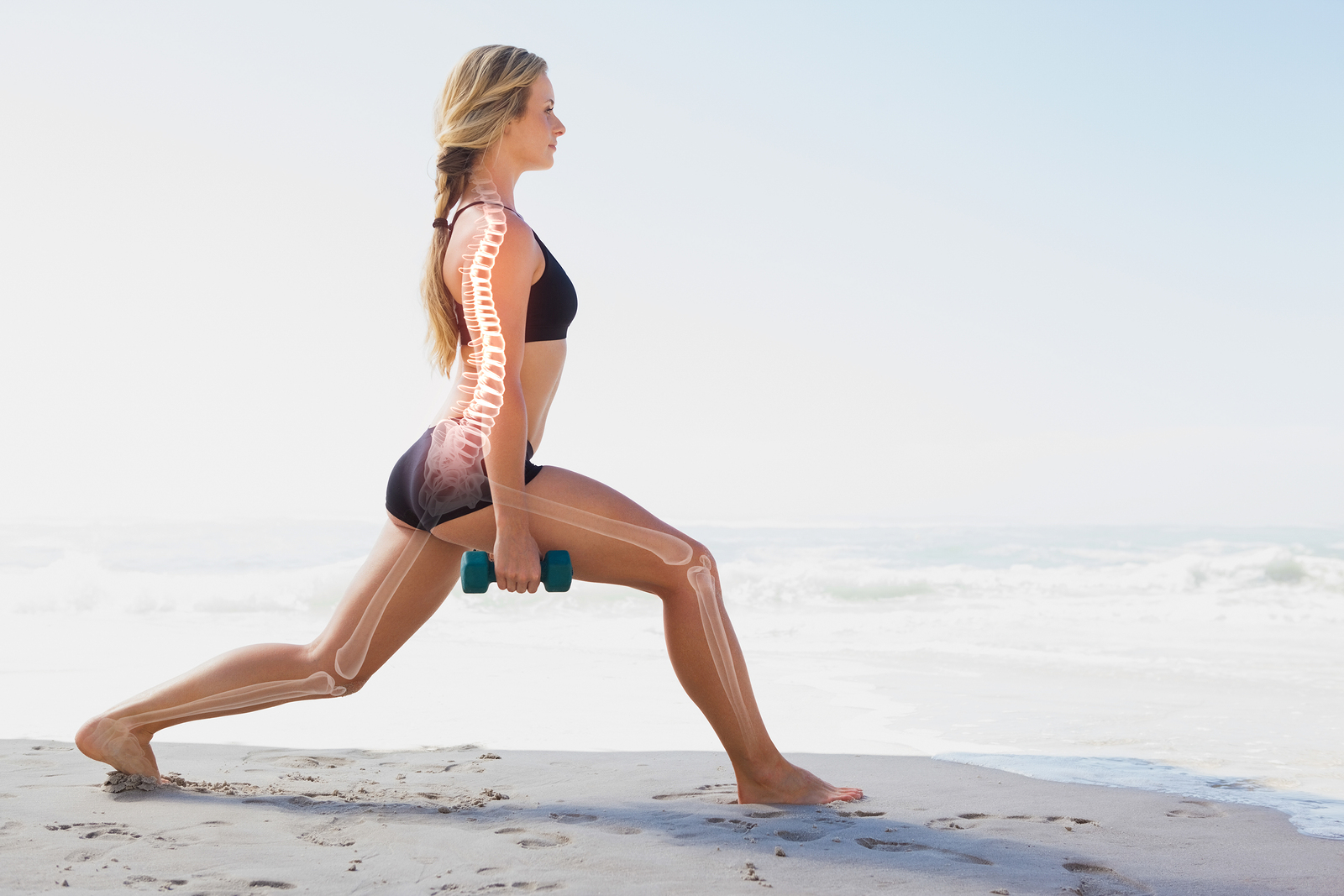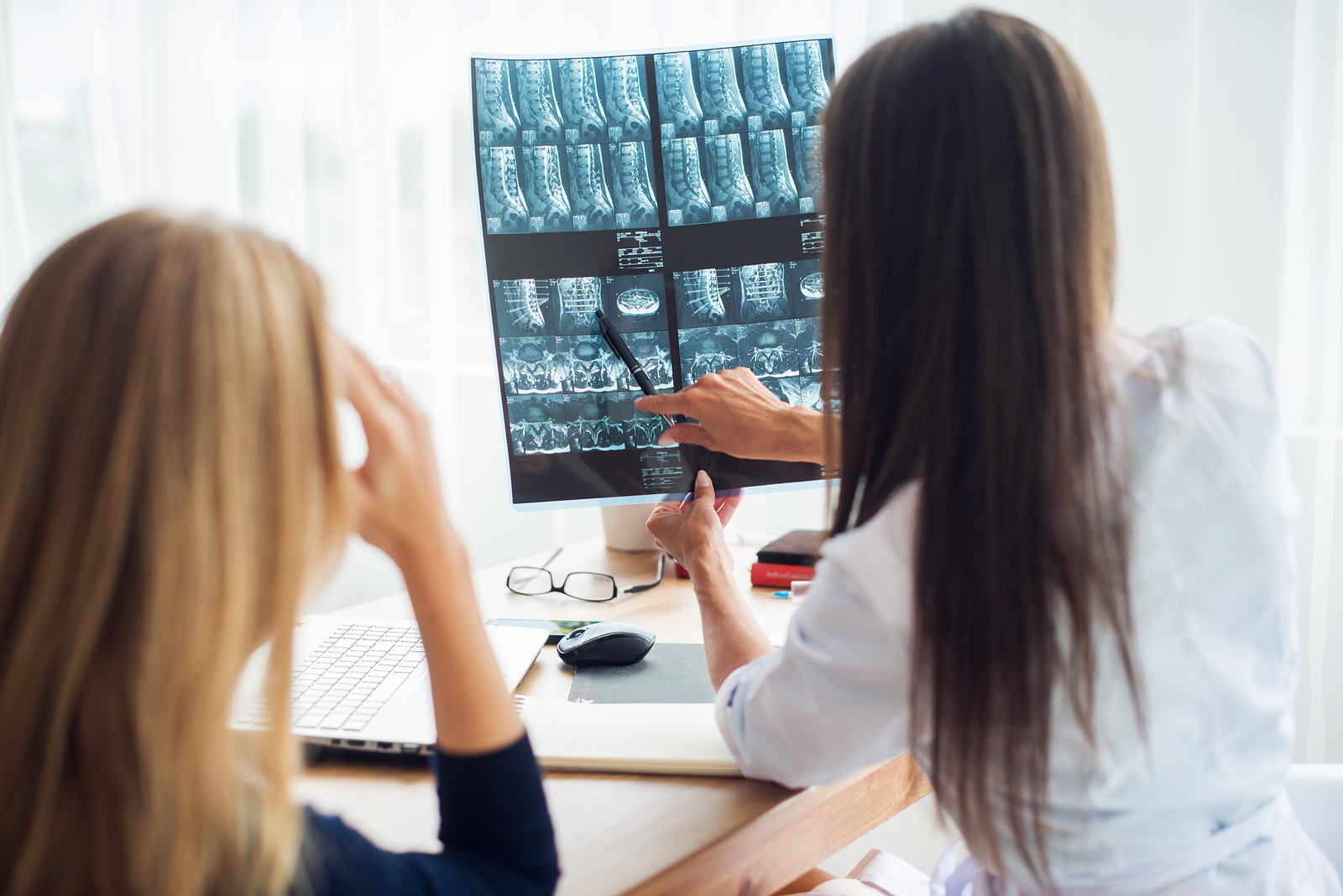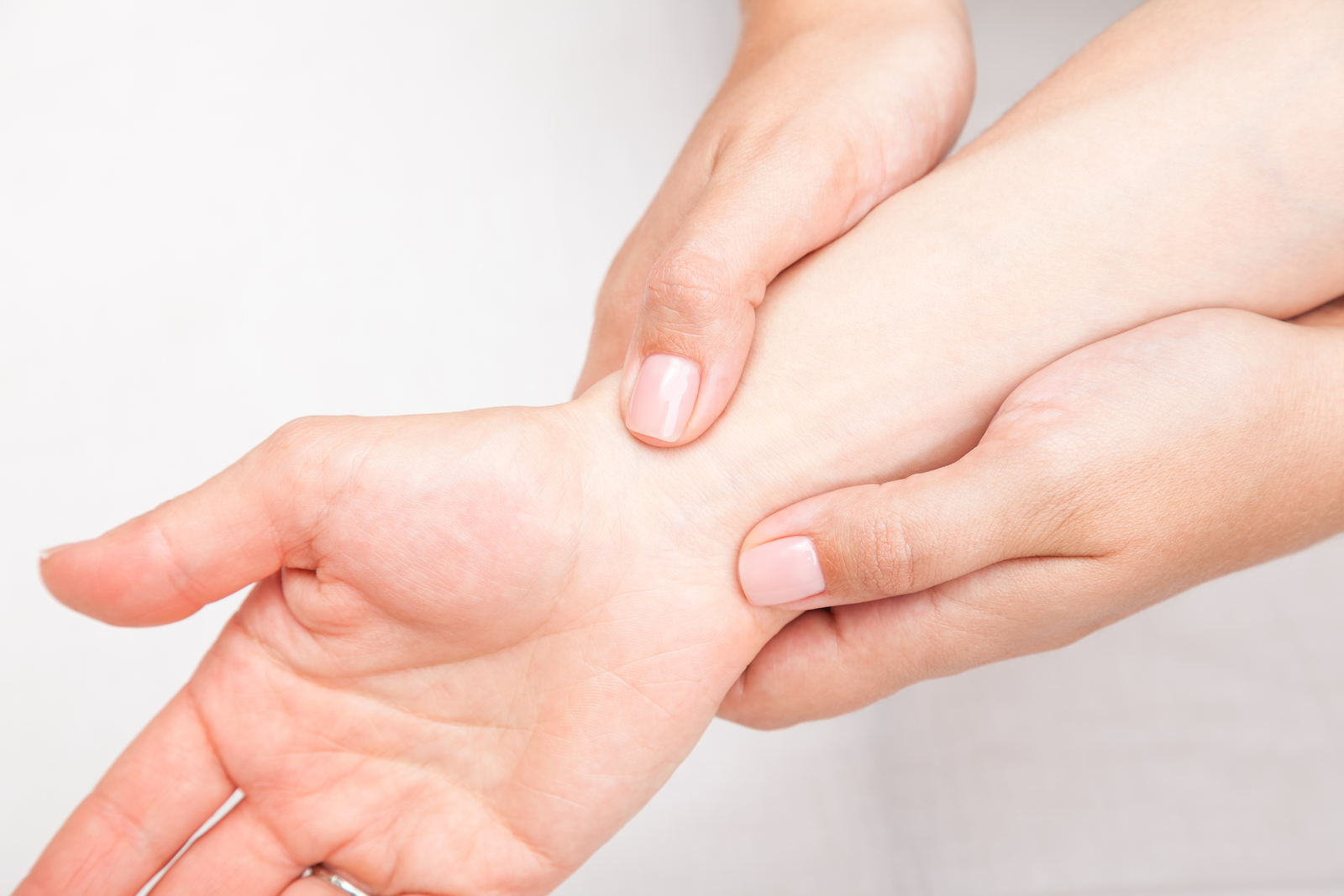The fear of breaking a bone is a big concern for many of the women I see – and with good reason. Fracturing a major bone, such as the pelvis, hip, or spine can be debilitating. And the media sends terrifying messages about the risk of fracture in women.
It seems like every time you turn on the tv there’s another celebrity endorsed ad for a “magic pill” that will protect your bones from withering away, or experts emphatically telling you to heed their advice or risk joining the half of women over 50 purported to have an osteoporosis-related fracture during their lifetime. But let’s pause for just a minute before you panic; I’ve found that these numbers highlighting the prevalence of fractures due to osteoporosis just don’t match up with what I know.
First of all, even the experts can’t agree on a number. The estimates range from 30-50% of women over 50 who will experience osteoporosis-related fractures at some point in the remainder of their lives; that’s a fairly big difference in numbers. Add to that the fact that many of these fractures are far less serious than you may have been led to believe, and the fear factor may drop considerably.
Which, of course, doesn’t mean that you shouldn’t be aware of what happens to your bones. There are steps you can take to reduce your risk, and if you do find yourself with a fracture, there are natural ways to help your body heal. So let’s take a look at risk factors, types of fractures, and how you can boost the healing process should it happen to you.
Fractures
Risk of Fracture
There are many factors that can increase your risk of fracture. Knowing these factors can help you make decisions that can positively impact your bone health, such as taking specific supplements or making conscious lifestyle changes.
Low Bone Density
You’ve probably heard something about bone density – maybe even more misleading statistics. But there are a few things you should know. First, your body type, racial background, exercise profile and more will impact your bone mineral density(BMD), and often when BMD is tested, women are told the T-score, which is compared to those of average women in their late 20s to early 30s – without accounting for any of these factors. A Z-score is more accurate, comparing you to someone of your own age, racial origin, gender and weight. But all too often, providers don’t explain the difference, leaving room for more fear than is warranted when your receive news that you have had “bone loss.”
Another thing to keep in mind is that thin bone can often support you as long as it’s strong, healthy bone. Poor quality bone is what increases risk, not thickness alone. So don’t buy into the idea that thinner than standard bone density automatically means treatment by prescription.
Falling
Most fractures occur as the result of falling. But often, these fractures – particularly in the wrist- have less to do with the fragility of the bones and more to do with conditions of the fall; often women brace themselves as they fall, resulting in a fractured wrist. As response time declines with age, women are less able to throw their arms up in time and end up falling on their hips.
Statisticians will tell us that more than one third of people over 65 will fall at least once. Of that approximately 30% of people, half will fracture a bone. If you have established osteoporosis, the risk of fracture that seriously impedes your life is elevated, because once an osteoporitic bone is broken it is very difficult to mend. That’s why finding ways to reduce your risk of falling is as important as boosting your bone health.
Other Factors
There are plenty of other things to think about when it comes to the health of your bones. Deficiency of certain vitamins – such as Vitamin D and Vitamin K – can have a large impact on your bone health. Lack of physical activity, weak muscles, a history of prior fractures, use of corticosterioid drugs, and a diet low in minerals and high in acid all contribute to risk of fracture as well. As you can see, it’s not a simple issue. But that doesn’t mean you have to live in constant fear.
Type of Fractures
An important thing to know about the statistics is that they include any type of fracture – not just those that can alter your life significantly. Most notably, they include spinal fractures, which are far more common but less debilitating than fractures in other areas.
Spine Fractures
Losing height and getting a hump are two images of osteoporosis seared into our brain by the media—but the truth behind spine fractures is less daunting. Most vertebral fractures are due to compression and are symptom-free.
Spinal compression occurs when the cushioning tissue between each vertebrae deteriorates over time—it has nothing to do with osteoporosis unless you have been diagnosed with spinal osteoporosis. For the vast majority of women, losing height is just part of gravity’s pull.
Spinal deformity caused by hairline fractures in the vertebrae can cause curvature of the spine and back pain: the dreaded “dowager’s hump.” The chance of developing this condition is exceedingly rare in women under 80. Not only that, but the loss of muscle strength and weakened posture is far more likely to cause a dowager’s hump than multiple spine fractures.
Hip Fractures
Hip fractures are particularly frightening because they have the most impact on a woman’s quality of life. After age 75, 30% of people with hip fractures don’t recover enough to fully engage in their usual lives. By 90, one third of all women may experience a hip fracture.
But these figures are misleading when it comes to osteoporosis because at least half of all hip fractures after age 80 can be attributed to a fall caused by other factors—not a bone spontaneously breaking. And in most cases where bone fragility was a factor there were other co-factors.
The best statistic to pay attention to is that over 85% of women turning 50 years old today, with a life expectancy of 80, will not have a hip fracture, regardless of their bone density.
It is still important, of course, to pay attention to your bone health. The small group of people who exhibit multiple risk factors is the group most likely to sustain a hip fracture. Though not all risk factors are something you can change, there are steps you can take to improve your bone health and reduce your risk of fracture.
Steps for Building Bone Health
You won’t be able to prevent all bone loss, but here are some steps you can take to do all you can to protect your bones.
Assess Your Personal Risk
Start with an honest discussion with your healthcare provider to assess your actual risk. Remember, people with multiple risk factors are those at highest risk of fracture. Ask about the World Health Organization’s tool (FRAX), which accounts for age, weight, previous fracture history, family history, and other risk factors to determine a more accurate score than one bone density scan can provide.
Get the Right Nutrients
If you aren’t providing your body with all the nutrients it needs, it will seek them out in your bones. The best diet centers around fresh, whole foods, primarily plant-based, with a moderate amount of animal protein. Processed foods, white flours, additives, preservatives and refined sugar are best avoided.
Supplement with Bone-Building Minerals
While I recommend a high-quality multivitamin to all women, there are also some specific nutrients key to bone health, including Vitamin D, Vitamin K, manganese, zinc, and copper. Making sure you are getting enough of each of these can impact your bone health in a big way.
Focus on Alkaline-Forming Foods.
The American diet is high in acid-forming foods, including animal protein, processed foods, refined sugars and flours, the wrong kinds of fat, and alcohol. Too many of these foods can prompt your body to raid your bones for “base” minerals that will counteract the acid, depleting the mineral reserves in your bones. Vegetables (especially green leafy vegetables and root vegetables), fruit, nuts, seeds and spices can all help. Try adding fresh lemon or lime to your water, eliminate caffeine and soda from your diet, and reduce the amount of animal protein you take in.
Build Stronger Bones Through Exercise
Your body needs to move! When you exercise, you trigger bone-building processes in your body. It doesn’t have to be strenuous – walking and yoga are both great options. But if you want to build more bone, extensive strength training can help.
Practice Fall Prevention
You can avoid fracture, even with osteoporosis, simply by being more aware of falling. Build better balance through practices like yoga, qi gong, dance and tai chi. Be aware of, and remove, tripping hazards in your home. Make sure your home is well lit. Consider wearing hip protection if your risk of fall is great.
Reduce Stress
Chronic stress can increase your body’s acid load, whether it’s physical stress or mental stress. And even historical stress – issues from your past – can take a toll. The major stress hormone, cortisol, is extremely tough on your body if it remains constantly elevated. Take at least a few minutes for yourself every day to calm your mind – and your body.
Healing Fractures More Quickly – and Naturally
Sometimes, no matter what we do, a fracture will happen. Healing can take a lot of time and energy, but it’s not all out of your control. There are steps you can take to speed the process, getting you up and about sooner than you might think. Here are five simple tips for helping your bones to heal:
- Add a quality multivitamin and mineral supplement. Bone is almost ¾ mineral content by weight. To heal, you need an ample supply of all of them. Some of the key minerals to promote fracture healing are: zinc, copper, calcium, phosphorus, and silicon. Vitamins such as C, D, and K are also key to the process of healing.
- Pay attention to protein intake. Healing bones require more protein, and even a small increase in your diet can speed the healing process. Add plant-based protein, such as soy, lentils, almonds and quinoa to avoid creating an excessively acidic environment.
- Increase nutrients with anti-inflammatory properties. Research indicates that antioxidants can speed fracture healing by slowing down the inflammatory effects of the free radicals that are released during the rupturing of tissues. Try adding more berries to your diet, include leafy greens in your recipes, and consider an Omega-3 supplement.
- Don’t take aspirin or ibuprofen. While it’s our instinct to reach for a pain reducer when injury occurs, these types of nonsteroidal anti-inflammatory drugs can actual slow healing. Acetaminophen is a better choice, as are natural pain-relief solutions such as quercetin.
- Get moving. While you might not think of exercise as a way to boost healing, you should. Good circulation and adequate blood flow are essential to healing, and each is enhanced by exercise. To find the right exercises that will avoid stress and accelerate healing, talk to a physical therapist.
Put Aside the Fear and Take Control of Your Bone Health Today
I certainly won’t tell you that a broken bone won’t impact your life. But avoiding the issue because it frightens you won’t arm you with the information you need. You have more control than you think – and now is the perfect time to do everything you can to keep your bones healthy and strong!







